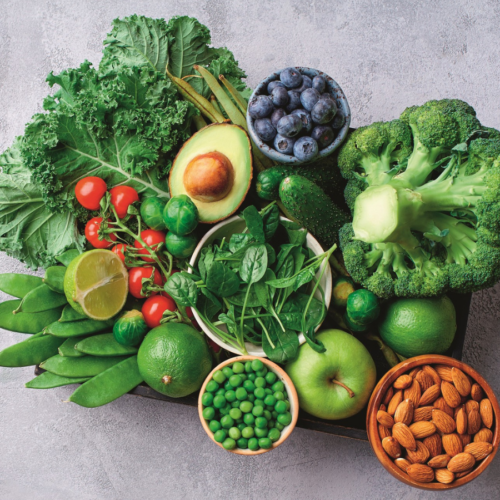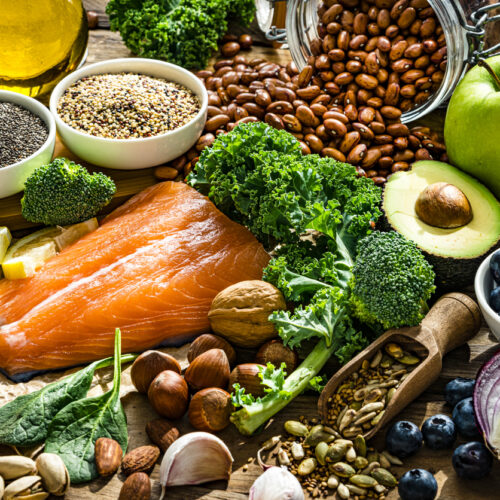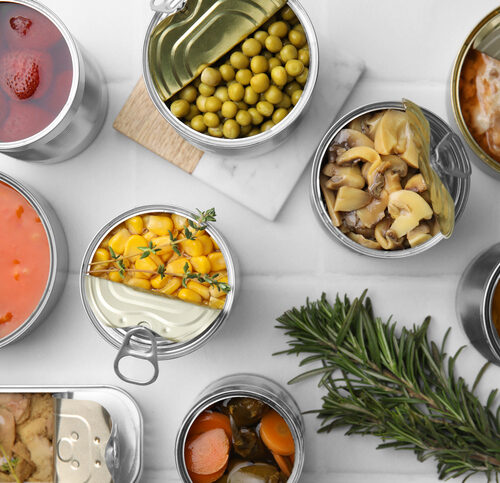
On a budget? Save money in the kitchen with our tips and HFG readers' money-saving secrets.
Make your kitchen budget-friendly
- Buy 'social' ingredients: There's no point spending money on an ingredient you'll only use a portion of in one recipe – it'll go off before you can use it again. Unless it's a special occasion, stick to ingredients you can use every day.
– Bunch unused spring onions $3
– SAVE $3 - Use small containers: Famous author and researcher Dr Brian Wansink found that the larger the container, the more we tend to eat – even if we don't like the food! Portion bulk buys into smaller containers and you'll automatically serve yourself less each time.
– Using half as much rice $2
– SAVE $2 - Plan around your veges: Lettuce deteriorates much faster than broccoli. Plan salads with your meals for the days immediately following your shop, and save your hardier veges for the end of the week.
– Unused bag of spinach $3
– SAVE $3 - Grow a herb garden: All you need is a small, sunny spot on your windowsill to create a never-ending supply of healthy, convenient, tasty flavour. Home-grown herbs add zest to your meals, a touch of foliage to your home, and they'll never go off.
– Buying cut herbs $3.50 ea.
– SAVE $3.50 - Rethink portion size: Numerous studies have shown portion sizes we eat at home have been growing, and the amount we think of as the typical or appropriate portion has grown with it. Serve up one less chicken breast in your stir-fry – you can use it for sandwiches tomorrow.
– Using one less chicken breast $4.50
– SAVE $4.50
Reader super saver: Cheryleita Downie
Household: Lives with husband John
Weekly grocery spend: $150 per week on average. "That may seem a lot, but as we never buy lunches and only eat out for dinner once a week, it works out to be a little over $10 each per day! I also often buy in bulk when things are on special."
Cheryleita's top tips
- "I don't give in to the 'convenience' foods. For example, instant rice packets are $3 or so for a single serving while a 1kg bag of rice has 10 or more servings and costs the same. I cook up a big batch of rice on a Sunday night, then use it for dinner that night, put it in salads for lunch and dinner the next day. I only dirty one pot, it saves time and money and it's healthy."
- "Make your own yoghurt. An EasiYo maker is only $30 max. to purchase, and the sachets from the supermarket are about $3.30 when on special – so I stock up then. It's much cheaper than pre-made yoghurt brands, and easy to separate into five or so containers for cheaper single serve portions to go with lunches."
- "Make your own dips. Mix up plain yoghurt in a yoghurt maker but with less water so it has a thicker consistency. Mix with garlic, lemon and any herbs to make a delicious low-fat dip. Mix in a little beetroot to give a wonderful colour and flavour."
Make it last
- Freshen broccoli: You can refresh broccoli by chopping off a centimetre of the stem and putting it in water (like a vase of flowers). Leave for a day – voila!
- Freshen bread: You can freshen up a day-old loaf by briefly holding it under water and then oven-baking it in a moderate heat for 10 minutes, or until crusty.
- Keeping fruit fresh: Using cut banana in a fruit salad or sandwich? Place it in very hot water for 15 seconds before peeling. Let cool, peel and then use as normal – it won't brown for hours.
Reader tips:
- "Put in a vege garden keeping in mind what neighbours are growing. If you plant tomatoes and your friend grows peppers, you can swap produce to avoid a surplus of one thing. If your veges come all at once, you can give extra to the local hospice, food bank or retirement home." – Christine
- "I always plan to include a 'rummage night' for one night's dinner (usually a Sunday). We look in the pantry and fridge and make dinner from whatever we can find that's leftover or spare. We have some creative meals this way, and it's good for using up random cans hiding in the cupboard." – Suzanna
- "Plant your own tomatoes – small plants are cheap to buy and easy to grow in pots or the garden. You can grow lots of different varieties (and stagger the planting times so you don't run out). They are delicious and useful for salads, sandwiches, salsas, sauces, pastes, chutneys and for things like curries and frittatas. The big plus being that they taste so much better home-grown." – Anna
- "My kids love dried fruit. I buy apricots, prunes and dates in bulk and wrap little packets in wax paper for their lunchboxes. It's much cheaper than buying packaged treats. Sometimes I add a chocolate button or an almond." – Annie
- "I find planning a couple of meat-free meals a week is a good way to keep the food budget under control. Things like risotto with pumpkin and feta, and bean burritos go down well with my family and no one seems to notice there's no meat." – Sallie
© Healthy Food GuideAll rights reservedReproduction without permission prohibited
www.healthyfood.com
www.healthyfood.com










